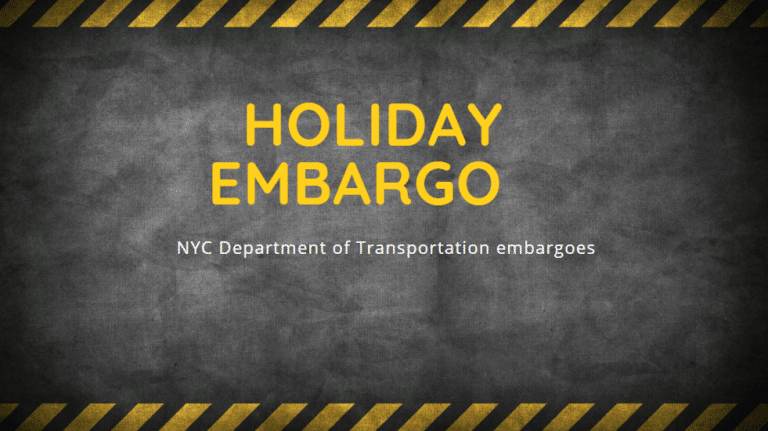Last Updated on June 16, 2025 by Jeffrey Calderon

Securing NYC DOT Permits for Facade Restoration
Facade restoration is crucial for maintaining a building’s aesthetic appeal and structural integrity. This process involves restoring the exterior surface, including all building components, to its original or improved state. Our comprehensive guide delves into every facet of facade restoration.
We’ll discuss the different types of permits required for complete facade restoration and walk you through the application process. Understanding the regulations surrounding this task is essential, so we’ll also shed light on these rules.
Our guide will also cover inspections and approvals necessary for restoring your building’s facade, crucial for brick buildings. Lastly, we’ll highlight the benefits of investing in a well-executed facade restoration project from enhancing curb appeal to increasing property value.
Types of Facade Restoration Permits
In the Big Apple, fixing up a building’s facade isn’t as easy as grabbing your tools and going to town. You need the proper permits from the Department of Buildings (DOB) to ensure everything is up to code and looks good.
The permits you’ll need depend on the size and scope of your project. Here are some common ones:
- Alteration Type 1 (ALT1) Permit: This permit is necessary when making big changes that affect how the building is used or occupied.
- Alteration Type 2 (ALT2) Permit: If your renovation doesn’t change the building’s use or occupancy but involves multiple tasks like plumbing or construction, you’ll need this permit.
- Facade Repair Permit: This one’s for fixing up facades without major structural changes.
You might also need additional permits for specific aspects of your project, like installing a sidewalk shed or using a crane. These require separate permissions from the NYC DOB.
Keep in mind that if you’re working on a landmarked property or one in a historic district, you’ll have to jump through extra hoops. The New York City Landmarks Preservation Commission (LPC) has rules about what can be done with these buildings’ exteriors, including their facades. You can learn more about them here.
Don’t worry; help is available. Some professionals specialize in navigating these processes. Architectural firms, for example, often handle permitting as part of their services. They know how important it is to get everything squared away before swinging a hammer.
Applying for a Facade Restoration Permit
Restoring your building’s facade in NYC? Get ready for a permit adventure.
A Step-by-Step Guide on How to Apply
- Know Your Project: Understand what you’re getting into before diving into the permit pool.
- Hire the Pros: Get licensed professionals on board to navigate the permit maze.
- File Those Plans: Let the pros create and submit detailed plans electronically.
- Pay Up: Don’t forget to cough up the fees. No free rides here.
- Schedule Inspections: Show off your progress and get those inspections lined up.
Remember, the process may vary depending on your project, so consult the experts.
Necessary Documents Required
- An architectural plan detailing proposed changes
- A completed PW1 form
- Copies of licenses held by involved contractors
For more specific requirements, check out the PW1 form instructions on the DOB website.
Don’t forget to renew those permits if they expire during your project. Stay on top of it.
Stay tuned for our upcoming guidebook, “Permits In No Time,” packed with tips and tricks to make this process a breeze. Time to save time, money, and resources.
Understanding Facade Restoration Regulations
In the Big Apple, facade restoration is more than just a pretty face or energy efficiency. It’s about safety and following the rules. NYC has strict regulations to keep those building facades in check and protect the public.
The Department of Buildings (DOB) enforces Local Law 11, also known as the “Facade Inspection Safety Program” (FISP). This law says that owners of buildings taller than six stories must inspect their walls every five years by a pro, who then reports to the DOB.
FISP Reporting Cycles
The FISP works in cycles that last five years each. We’re now on Cycle 9, beginning February 21st 2023 and concluding February 20th 2025 – don’t forget to save the date. Building owners, mark your calendars.
Categories under FISP Reports
A FISP report can put a building’s facade condition into one of three categories:
- Safe: No problems found during the inspection.
- Unsafe: Problems that pose an immediate threat to public safety.
- Safe With A Repair And Maintenance Program (SWARMP): No immediate danger, but repairs are needed in the next cycle.
Mandatory Repairs & Penalties for Non-Compliance
If your building is labeled ‘unsafe’ or ‘SWARMP’, you gotta fix it ASAP. Ignoring the rules can lead to hefty fines and legal trouble from the DOB. Safety first, folks.
Remember, if your property is unsafe, put up sidewalk sheds or construction fences until it’s safe again. Safety is no joke.
For more info on penalties, check out the Penalty Schedule provided by NYC Department Of Buildings.
Civil Penalty Exemption For Historic Buildings:
If you own a historic landmark undergoing facade restoration, there’s a silver lining. You might be exempt from civil penalties if you meet the Landmarks Preservation Commission guidelines. Check it out here.
Facade restoration in NYC is not just about aesthetics, but also about safety and compliance with regulations. The Department of Buildings enforces Local Law 11, which requires building owners to have their facades inspected every five years, and failure to comply can result in penalties and legal trouble.
Inspections and Approvals for Facade Restoration Projects
When tackling a facade restoration project in NYC, you gotta follow the rules. The city’s Department of Buildings (DOB) has some inspections and approvals in store for you. Safety first, people.
A. Initial Inspection
Before you start anything, a Qualified Exterior Wall Inspector (QEWI) will come by to check out your building’s exterior. They’ll point out what needs fixing and give you some advice. Check out NYC DOB’s official page for more info on these QEWIs.
B. Filing Plans & Getting Approval
Once the inspection is complete, it’s time to submit your plans in accordance with FISP guidelines for DOB approval. Your architect or engineer will handle this part. Just make sure you follow the FISP guidelines. The DOB will take a few weeks (or longer) to review your plans. Patience is a virtue, my friend.
C. Construction Inspections
During construction, the QEWIs and DOB inspectors will drop by every now and then to make sure you’re doing things right. They’re like the building police, keeping an eye on your progress and making sure you’re following the approved plans. Safety and quality are paramount.
D. Final Inspection & Report Submission
When you’re finally done with the facade restoration, the QEWI will come back for a final inspection. They’ll make sure everything is up to snuff and matches the approved plans. Then they’ll send a report to the DOB, complete with photos to prove it. If all goes as planned, you’ll be awarded a Certificate of Correction. High five.
E: Re-Inspection Cycle
Don’t forget, NYC buildings taller than six stories have to go through a re-inspection every five years. It’s the law, folks. This Facade Inspection Safety Program (FISP) keeps things in check and ensures the long-term maintenance of our beautiful city. Check out the details here.
Remember, following these steps keeps your building looking good and standing strong. Let’s keep our city safe and fabulous.
When undertaking a facade restoration project in NYC, it is important to follow the rules set by the Department of Buildings (DOB). This involves an initial inspection by a Qualified Exterior Wall Inspector (QEWI), filing plans for approval with the DOB, regular construction inspections, and a final inspection. Additionally, buildings taller than six stories must undergo re-inspection every five years as part of the Facade Inspection Safety Program (FISP) to ensure long-term maintenance.
Benefits of Facade Restoration Projects
Restoring the facade of a building is more than just improving its looks. It’s an investment that offers safety, energy efficiency, and increased property value. Let’s dive into these advantages:
Safety First
Facade restoration keeps everyone safe. No more falling bricks or surprise hazards. It’s like giving your building a safety makeover.
Energy Efficiency Boost
Restoring your facade means saying goodbye to energy leaks. Insulating your facade helps keep the inside of your home comfortable no matter the season, while simultaneously saving you money on energy costs. Your utility bills will thank you.
Aesthetics and Value
A restored facade is a sight to behold. It’s like giving your building a makeover that impresses everyone. Plus, it adds value to your property. Who doesn’t love a win-win situation?
FAQs in Relation to Facade Restoration
What is facade rehabilitation?
Facade rehabilitation is like a makeover for buildings, fixing their exterior face to make them look and function better.
What are the problems with facades?
Facades can be a real pain, dealing with issues like water infiltration, structural deterioration, cracking, and looking plain ugly.
What is the importance of facade maintenance?
Maintaining facades is crucial for safety, energy efficiency, and boosting property value – it’s like hitting three birds with one stone.
What are the repairs of facades?
When it comes to repairs, we’re talking about fixing windows, repointing brickwork, giving them a fresh coat of paint, replacing damaged parts, and making them waterproof.
Conclusion
Whether your facade is only being maintained or upgraded, different types of permits and approvals are required from The City.
Knowing the rules that govern facade restoration and why inspections are a big deal can save you a lot of time and money.
Discover the perks of a facade restoration project, such as a prettier place, more money for other construction projects, and a stronger structure.
Now you’re armed with the knowledge to tackle your own facade restoration project like a boss.





